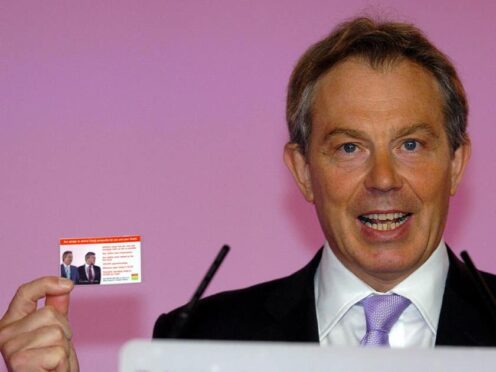Pledge cards have become talismanic for the Labour Party since Tony Blair’s campaign saw the small, laminated cards handed out to voters in 1997.
The cards carried five specific pledges, taken from the wider manifesto, that were meant to demonstrate how a Labour government would have a concrete impact on people’s lives.
The pledges were: cutting class sizes to 30 or under for five, six, and seven-year-olds; fast-tracking punishment for young offenders; cutting NHS waiting lists by treating an extra 100,000 patients; getting 250,000 under-25s off benefits using money from a windfall tax on privatised utilities; and a promise not to increase income tax and to cut VAT on heating.
Some commentators have expressed scepticism about their real impact, but within the party the pledge cards have been credited with helping Labour win its 1997 landslide.
In his book Unfinished Revolution, Labour strategist Philip Gould said the cards “worked better than anything else I have ever tested in politics” and “connected immediately to people’s lives”.

The apparent success of the cards meant they became a fixture of Labour campaigns at subsequent elections.
In 2001, the party issued another card with five more pledges, mostly promising to recruit more public sector staff.
The pledges were: keeping mortgages and inflation as low as possible; hiring 10,000 extra teachers; 20,000 extra nurses; 6,000 extra police officers; and increasing the minimum wage to £4.20 an hour.
The 2005 election saw a departure from previous practice, with Labour issuing another pledge card but including less concrete, measurable promises, such as: “your family better off”, and “your children with the best start”.
Labour also included a sixth pledge rather than the previous five, “your country’s borders protected”, reportedly in response to polling evidence suggesting the Conservatives were vulnerable on security issues.
In 2010, the pledges again appeared more nebulous – “secure the recovery” and “protect frontline services” – but came with further concrete detail on the back of the cards.
However, it was not enough to secure victory, with Gordon Brown sliding to defeat against David Cameron.

Ed Miliband also issued pledge cards in 2015, initially with five pledges but then adding a sixth promising “homes to buy and action on rents” just 10 days before polling day.
But the cards were overshadowed by the “Ed Stone”, an 8ft 6in stone tablet inscribed with the six pledges, intended to convey the message that Labour’s promises were “set in stone”.
But the “Ed Stone” was widely regarded as a dud and is believed to have been destroyed after the election.
As part of a general rejection of Blair-era tactics, Labour largely ditched the pledge cards under Jeremy Corbyn in 2017 and 2019, but did issue a “pensioner pledge card” in 2019.
However, the card included a pledge to compensate women affected by changes to the state pension age, a £58 billion promise that had not appeared in Labour’s “fully costed” manifesto and drove “a coach and horses” through its spending plans, according to the Institute for Fiscal Studies.
On Thursday, Sir Keir Starmer returned to the Blair playbook, with his “first steps for change” being printed on credit card-sized pledge cards, saying it was “a message we could take to every doorstep across the country”.
